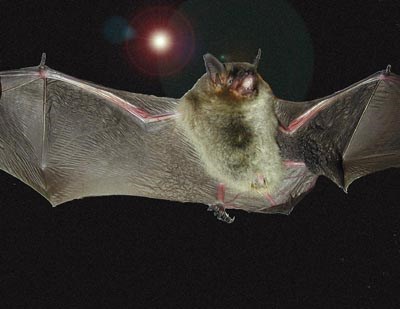
U.S. Army Corps of Engineers Gray Bat (Myotis grisescens)
The gray bat was added to the U.S. List of Endangered and Threatened Wildlife and Plants on April 28, 1976. Bats in very large numbers inhabit just a few caves. If the bats are disturbed by humans, the bats use up their reserves and die. Flooding is also a known reason of the demise of these bats; the cave flood or become submerged and the bats cannot find another one before they run out of energy and die. Gray bats do not nest in man-made structures such as homes or barns; they prefer caves. In the winter, gray bats hibernate in deep, vertical caves but in the summer, they roost in caves along Little River. The fur is gray sometimes an orange/russet color in the summer. One unique feature to this bat is that the wing membrane is attached to its ankle; instead of the base of the toe as in other species of Myotis. Gray bats grow up to 3 - 4 inches in length. Insects are the main diet for this bat. Gray bats reproduce in late May or early June with one single live birth.
|
Last updated: April 14, 2015
